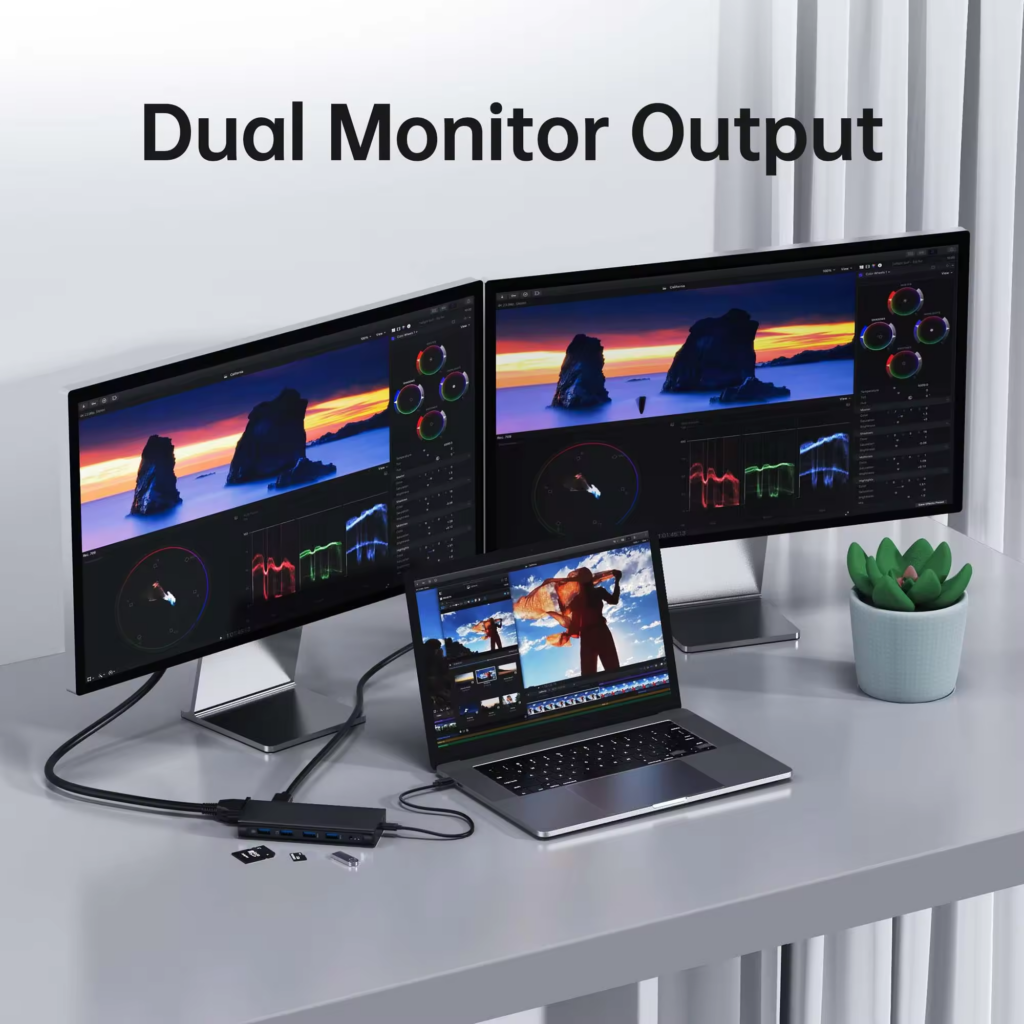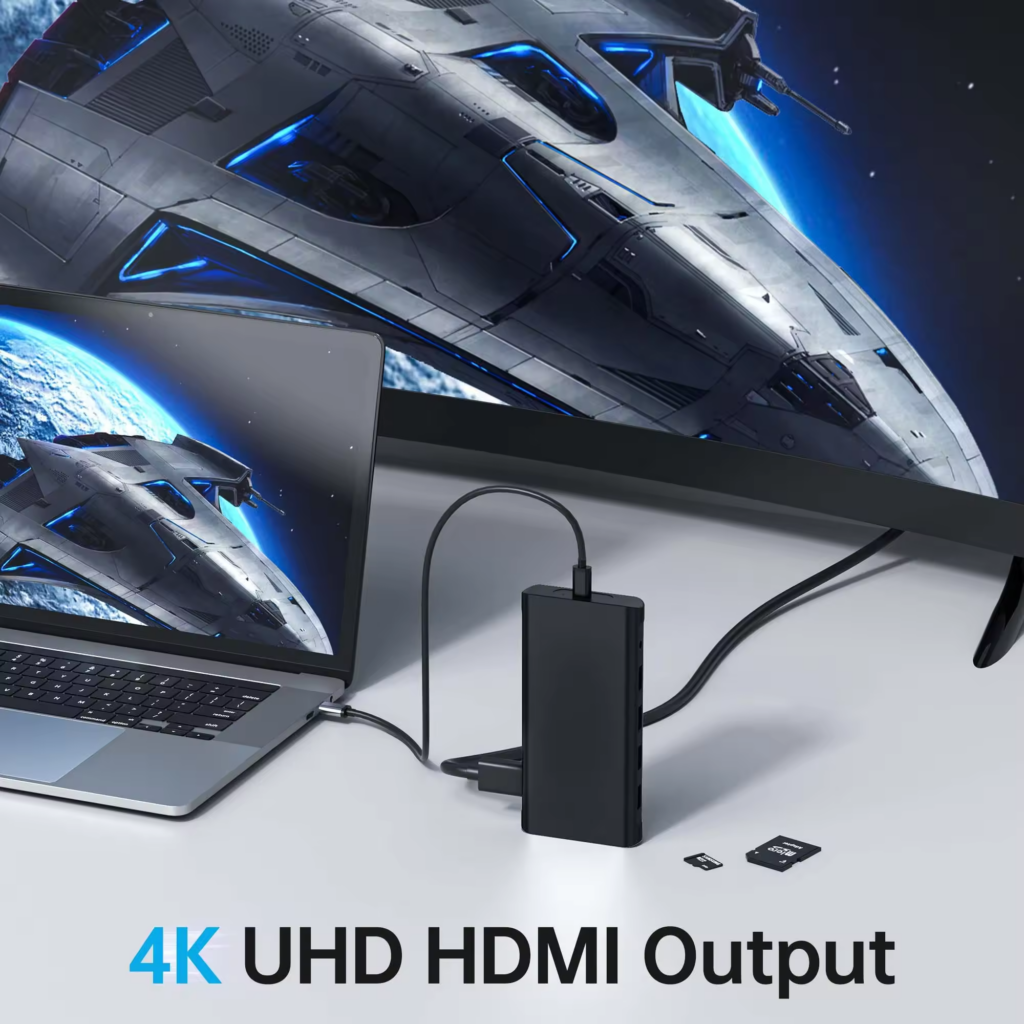As technology continues to evolve, our devices are becoming sleeker, more powerful, and more versatile. However, with this evolution comes a trade-off—many modern laptops and tablets, especially those on the thinner side, have fewer ports. Enter the USB-C docking station: a game-changing accessory that bridges the gap between portability and functionality. If you’re looking to enhance your workspace and maximize the capabilities of your device, a USB-C docking station might be exactly what you need. Let’s explore why this accessory is becoming an essential part of many tech setups.
What is a USB-C Docking Station?
A USB-C docking station, often referred to as a USB-C dock, is a multi-port adapter that connects to your device via its USB-C port. This dock can then connect to multiple peripherals simultaneously—such as monitors, keyboards, mice, external storage, and more—through a single, consolidated unit. Essentially, it transforms your laptop or tablet into a fully equipped workstation, without the clutter of multiple cables.

Key Advantages of a USB-C Docking Station
1. Versatile Connectivity
One of the most significant advantages of a USB-C docking station is its ability to expand your device’s connectivity options. Many modern laptops are equipped with only a few USB-C ports, which can be limiting when you need to connect several peripherals. A USB-C dock can include a variety of ports, such as:
- HDMI or DisplayPort for connecting external monitors.
- USB-A ports for connecting legacy devices like flash drives, keyboards, and mice.
- Ethernet port for a stable wired internet connection.
- SD card readers for easy access to photo and video files.
- 3.5mm audio jack for headphones or external speakers.
With a USB-C docking station, you can easily connect all your essential devices without constantly plugging and unplugging cables.
2. Multi-Monitor Support
For professionals who rely on multiple screens, such as graphic designers, coders, or financial analysts, a USB-C docking station is indispensable. Many docks support dual or even triple monitor setups, allowing you to extend your desktop across multiple displays. This expanded screen real estate can dramatically improve your productivity by enabling you to work on several tasks or documents simultaneously.
3. Seamless Charging and Power Delivery
One of the standout features of USB-C technology is its ability to deliver power alongside data. Many USB-C docking stations come with power delivery (PD) capabilities, meaning they can charge your laptop or tablet while also connecting to other peripherals. This dual function reduces the need for multiple chargers and cables on your desk, keeping your workspace tidy and efficient. Additionally, with power delivery, your device stays charged and ready to go even when running demanding applications or powering external devices.
4. Enhanced Portability
USB-C docking stations are designed with portability in mind. They are typically compact and lightweight, making them easy to carry in a laptop bag or backpack. This portability is especially useful for professionals who travel frequently or work from multiple locations. Whether you’re moving between home and the office, or working from a café, a USB-C dock allows you to quickly set up a fully functional workspace wherever you are.
5. Simplified Workspace
A cluttered workspace can lead to distractions and inefficiencies. By consolidating multiple connections into a single docking station, you can reduce cable clutter and create a more organized and aesthetically pleasing workspace. This simplification makes it easier to disconnect and reconnect your laptop, especially when you need to move your device frequently.
6. Future-Proofing Your Setup
USB-C is rapidly becoming the standard for many devices, thanks to its versatility and power. Investing in a USB-C docking station is a forward-thinking move that ensures your setup remains compatible with future devices and accessories. As more manufacturers adopt USB-C, your dock will continue to be a valuable accessory that enhances your device’s capabilities.

Choosing the Right USB-C Docking Station
When selecting a USB-C docking station, it’s important to consider your specific needs. Here are some key factors to keep in mind:
- Port Configuration: Make sure the dock has all the ports you need for your peripherals.
- Power Delivery: Check the power output to ensure it can adequately charge your laptop or tablet.
- Display Support: If you plan to use multiple monitors, confirm that the dock supports the required number of displays and resolutions.
- Compatibility: Ensure the docking station is compatible with your device’s operating system and USB-C standards.
Conclusion
A USB-C docking station is more than just a hub for connecting peripherals—it’s a tool that can transform the way you work. By expanding connectivity, supporting multi-monitor setups, delivering power, and simplifying your workspace, a USB-C dock maximizes the potential of your laptop or tablet. Whether you’re a professional, student, or creative, this versatile accessory is an investment in productivity, efficiency, and future-proofing your tech setup. If you’re looking to enhance your digital workspace, a USB-C docking station is a must-have addition to your arsenal.



